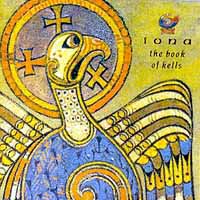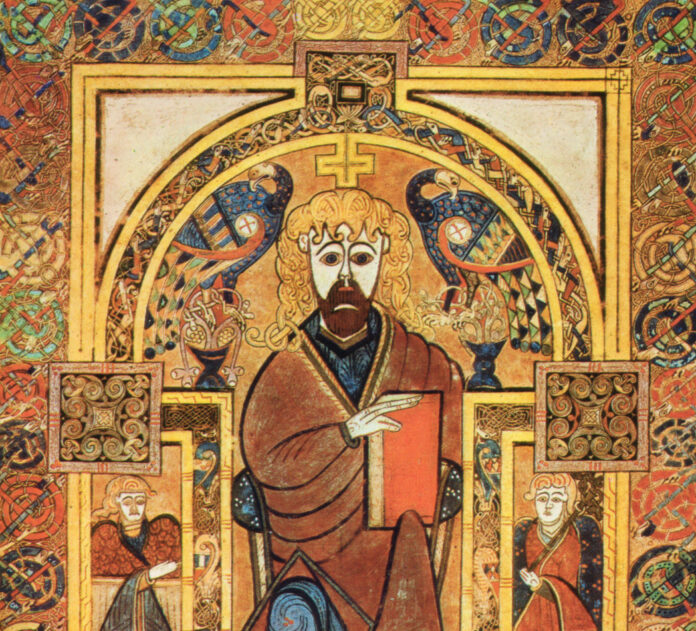Dublin’s awe-inspiring Book of Kells is one of the world’s oldest
The Book of Kells is best known for the elaborately beautiful detail and meticulous handwriting that fills its gilded pages. A religious manuscript of Christian gospels written in Latin, it is believed to have been completed by Irish monks on the Island of Iona near Scotland around the year 800. Following the ransacking of the monastery of Iona by Vikings, survivors brought the manuscript to a settlement in Kells, Ireland — hence the name. The book was moved to the library of Trinity College in Dublin in 1646.
Visitors can see it there now. Trinity, one of the world’s most famous universities, and one of Ireland’s most popular tourist destinations, was founded in 1592.
Though home to about 16,700 enrolled students, Trinity welcomes more than 750,000 visitors annually, a great many of them longing to catch a glimpse of this famed manuscript, with its beautiful writing and decorative illustrations that have been carefully preserved for centuries, surviving wars, floods, fires and thefts.
As the book is one of the world’s oldest, visitors are not permitted to touch it. It is preserved in a glass display case. Until recently, Trinity College staff would flip the book pages daily, in order to show off a new page each day. But now the pages are flipped just once a week, due to the book’s fragility, and no photographs of the book are allowed. A replica is on display in a glass case in The Long Room, near where it is housed, and visitors may photograph the replica.
Colored with exotic dyes

As colored ink was nearly impossible to obtain in that era, one of the marvels of the volume is its brilliantly colored or “illuminated” illustrations. Colored ink used in the book was made from a variety of minerals, dyes, clays, berries, insects and other sources used in ancient times. For example, black ink could be derived from “iron gall,” created by a chemical reaction of iron salts and plant galls; “lamp black,” carbon deposits created from the burning of various materials; and “bistre,” a carbon black produced from wood soot and acacia gum, the hardened sap of the acacia tree. Red ink was created from red lead, orcein lichen dye and a dye made from the roots of the madder plant.
The book, which tells the story of Christianity through illustrations and symbols, is filled with large, complex, and ornately inlaid illustrations on vellum, a type of paper made from specially-prepared animal skins. Scholars estimate that the skins from 185 calves were used to make the book. Because paper was so expensive and so rare at the time, the pages contain almost no blank space. Every inch of each page is filled with elaborate script and vivid illustrations depicting biblical events and symbols, as well as animals such as snakes, goats, otters, and cats.
Not only is The Book of Kells a massive artistic triumph, but the work is especially impressive given that most people in the world were illiterate then. Scholars believe that The Book of Kells was created by four individuals, each possessing a distinctive style. The Book remains a staple of Irish history, and an important document in the history of global literature and written communication.
A 2009 children’s animated film, “The Secret of Kells,” brought The Book of Kells back into the headlines. Created by Irish animation studio Cartoon Saloon and nominated for an Academy Award for Best Animated Feature, the film tells the story of the book’s creation.

In the Long Room
The Book of Kells is housed in Trinity College library’s Long Room which, at 213 feet, claims to be the longest single-room library in Europe. Construction on the room began in 1712, and took 20 years to complete. British colonialism resulted in struggles for Irish independence and cultural survival, and the British government’s initial resistance to providing funds was a partial reason for the library’s delayed construction.
Visitors are struck by the sheer size of the two floors of bookshelves, lined with thousands of some of the oldest books in the world. As the library was given permission to claim a free copy of every book published in both Ireland and Great Britain, the Long Room is now home to more than 200,000 of the oldest books in the library’s collection. (The full library stocks more than 6 million books, manuscripts, and maps.) The Long Room is also decorated with sculptures of famous historical figures, including the Irish writers Bram Stoker and Oscar Wilde, the Anglo-Irish satirist Jonathan Swift, and Aristotle, Plato and Cicero.
Known for its signature rounded barrel vaulted ceiling, the library was originally constructed with a flat ceiling, and was renovated in 1858 to accommodate its growing book collection. In this renovation, the library’s rounded ceiling, and second floor of bookshelves, were built.
Due to the high value and delicate nature of the older books in this library’s collection, requests from readers are handled by highly trained staff. The library’s Conservation Department is currently working on scanning volumes of older manuscript to expand access online for worldwide readers.
The harp is an ancient symbol of Ireland, and the Long Room also features the Brian Boru Harp, Ireland’s oldest surviving harp. The room also contains an original copy of the Proclamation of the Irish Republic, written during the famed Easter Rising insurrection of 1916, when Irish patriots declared Ireland’s independence from Great Britain. The scale and historical importance of these items explain why this exhibit remains a must-see staple of Irish tourism.
President Joe Biden has visited, as have Prince Harry and Meghan Markle. Popular culture fans know the library from its striking resemblance to Hogwarts in the Harry Potter films, and the Jedi archives of the Jedi Temple in the fifth Star Wars film. Most recently, the library was the model for scenes from the 2020 breakout Hulu series Normal People, and a scene from the 2021 Apple TV science fiction series Foundation.
The library is about to close temporarily to visitors, though. A $95 million restoration project will keep the library closed to visitors for at least three years, starting in October 2023. The restoration will focus on fireproofing the building and its books, and conserving the ornately carved wooden walls, ceilings and window frames. Trinity College professors and historians felt an urgency to begin this fire-proofing project following the catastrophic 2019 fire at Paris’ Notre Dame Cathedral.


